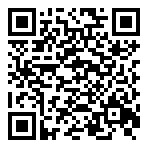Aarskog syndrome, face-fingers-genital syndrome
Eye symptoms
- hypertelorism,
- dystopia canthorum,
- ptosis,
- ophthalmoparesis,
- strabismus,
- astigmatism,
- megalokornea.
Common manifestations
Slowing growth in the first year of life. Patients have a round face, a wedge-shaped growth of hair on the forehead ("widow's peak"), broad nasal bridge, short nose with splayed nostrils, maxillary hypoplasia, mandibular prognathism, fold under the lower lip, abnormal ears.
This disease is characterized by laxity of joints, brachydactyly, clinodactyly of the fifth fingers, membranous films at the base of the proximal phalanges, wide foot. On the part of the genitals is often noted unusual shape of scrotum (roll surrounds the base of the penis), splitting of the scrotum, cryptorchidism, phimosis.
On the part of skeleton: anomalies of the cervical vertebrae, scoliosis, chest retraction, valgus deformity of the elbow joints.
Mental retardation, or difficulty in learning observed in each of the seventh sick child.
Growth hormone secretion is not broken.
Women - heterozygous carriers of the abnormal gene - have abortive signs of the disease: a flattened bridge of the nose, hypertelorism, hypoplasia of the mandible. The full version of the syndrome occurs in males.
Type of inheritance X-linked recessive or dominant
Differential diagnosis should be made with the Ullriha-Noonan syndrome and hypertelorism.
Isolated in a separate clinical entity in 1970 by the Norwegian pediatrician Dagfinn Aarskog (b. 1928).

